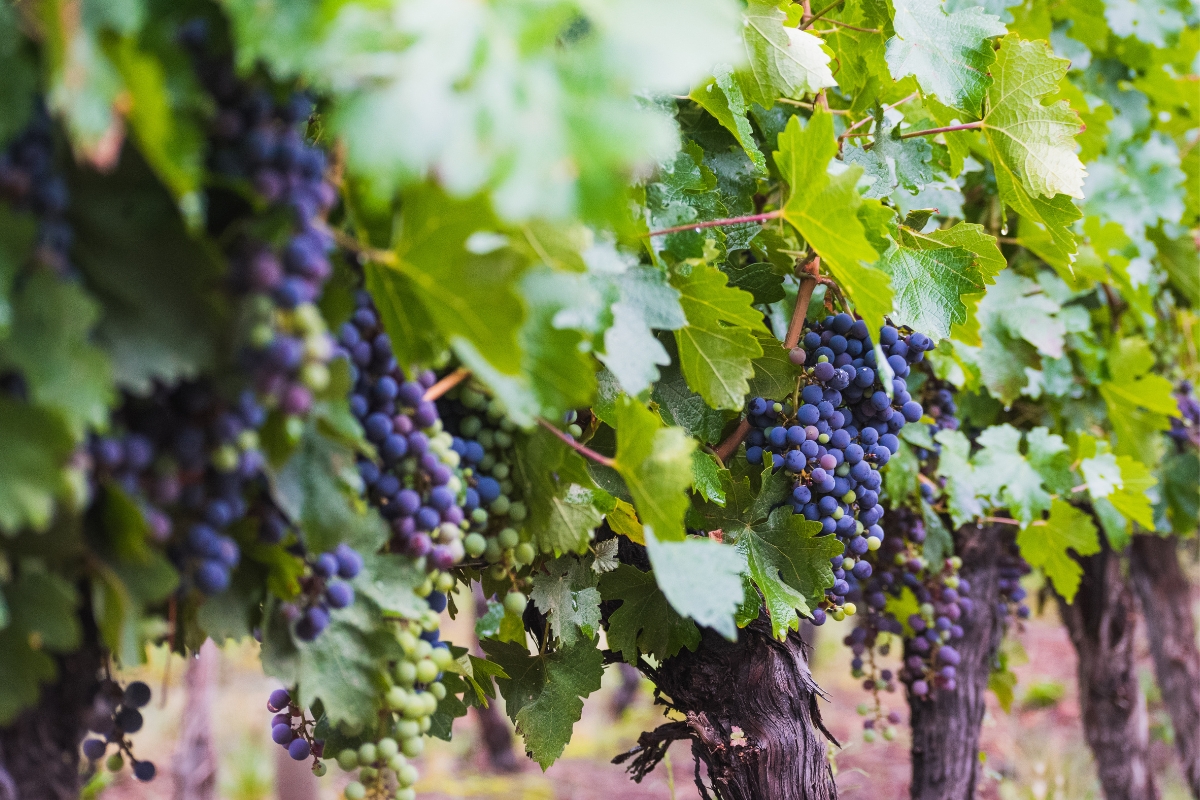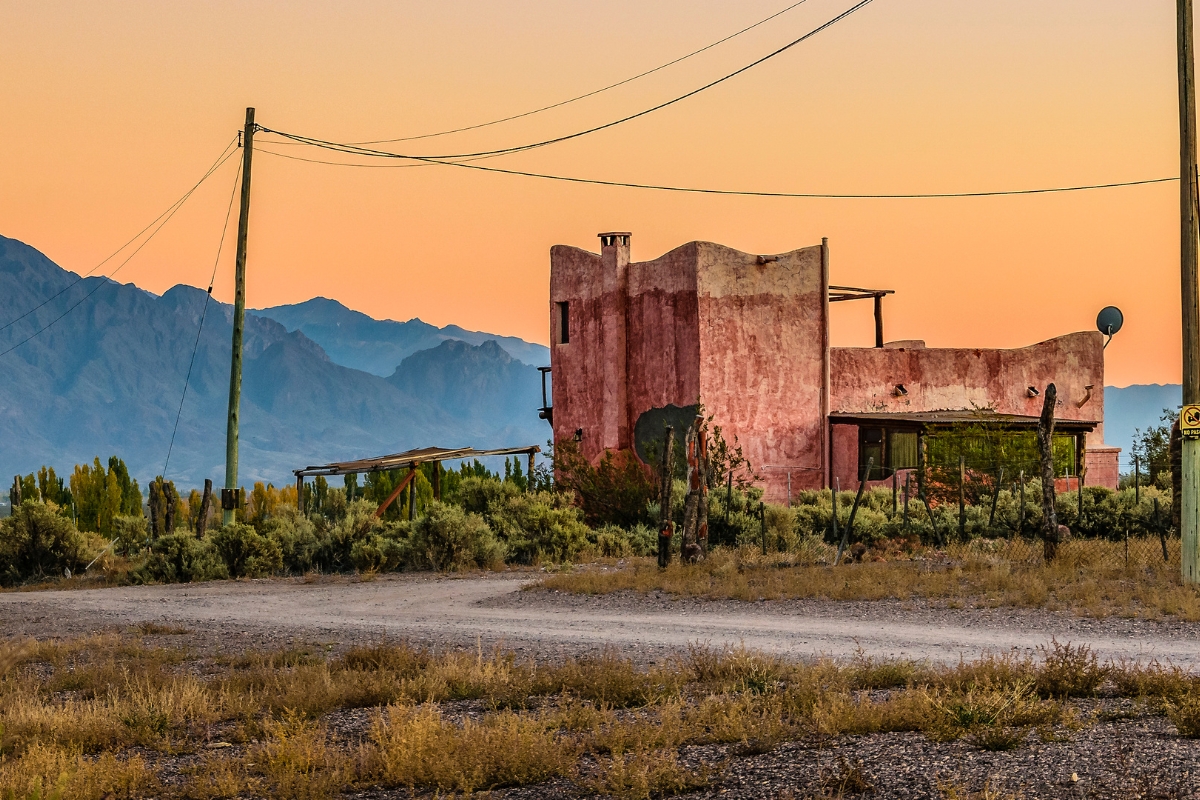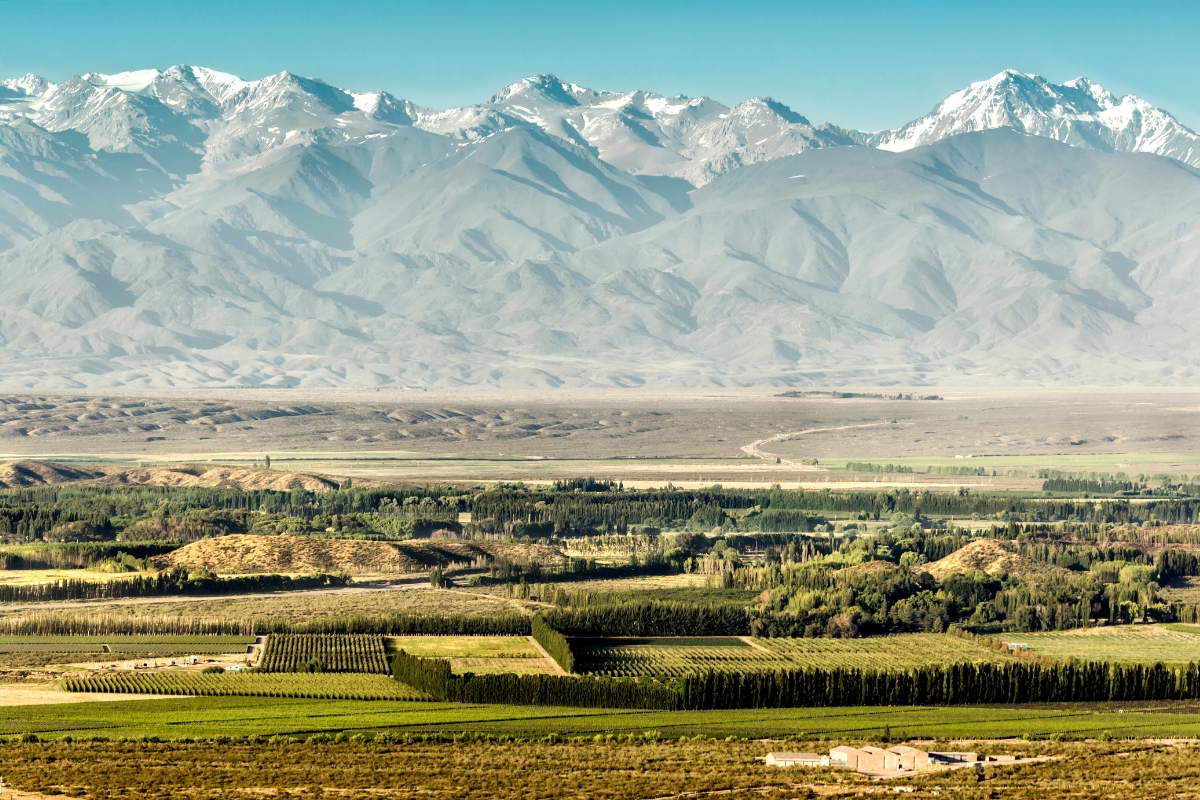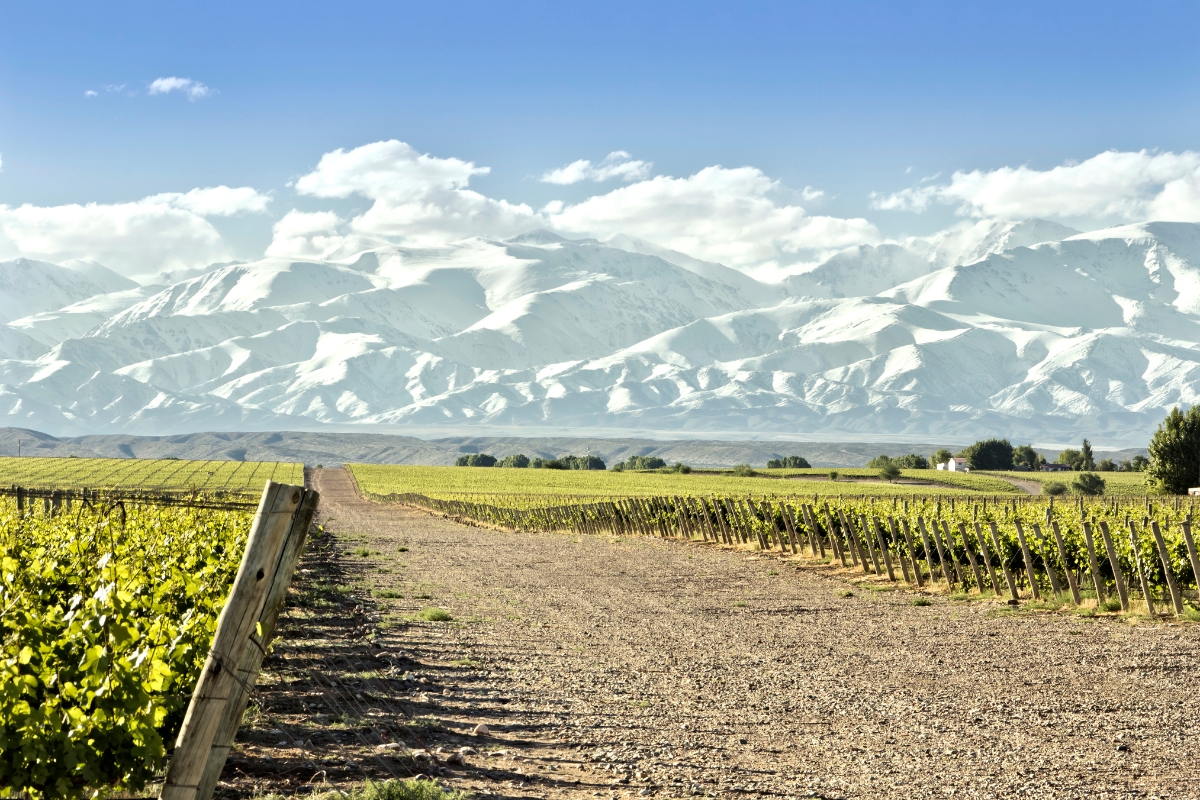South African journalist and SA Expeditions Destination Expert Nick Dall looks back on how the region he once lived in has transformed itself into the darling of the global wine scene.
In the winter of 2005, I arrived in Mendoza, Argentina, armed with an English-teaching qualification and a collection of fly-fishing rods. One of the first jobs I landed was helping the export department of a winery improve their English conversational skills. A cooperative representing more than 5,000 farmers, it was (and still is) the largest wine producer in Argentina. With the best-selling box wine brand in the country, the company had the domestic wine market pretty much sewn up. But my students had their sights set on the rest of the world. Argentine wine – Malbec in particular – was just beginning to make a name for itself, and the country’s biggest producer by volume wanted a slice of the high-end action.
Back then, there weren’t many expats in Mendoza. One weekend I got invited to an asado (barbecue) hosted by an American guy who was building a wine-themed luxury resort in the nearby Uco Valley. As a penniless English teacher I was a bit out of my depth among his entrepreneur friends, but I did question the sanity of investing millions of dollars in what was still a relative backwater. I often drove through the Uco Valley on the way to the trout streams in the foothills of the Andes, and while there were a few fancy wine estates back in 2005, there was also a lot of empty, uncultivated land.
Fast forward twenty years, and I have been proved royally wrong. The winery I taught at continues to dominate the local market, but it also has offices on every continent and a high-end brand that competes with the world’s best. The wine resort proved a resounding success: not only is it one of the most sought-after hotels in the region, but hundreds of people from all over the world have bought their own private vineyards on the property. The Uco Valley, meanwhile, has evolved into one of the hottest property markets in the wine world, with millionaire investors falling over themselves to get a seat at the table.
In the beginning
Section Type: standardWidthImageS
Beneath the vaulted brick ceilings of Mendoza’s historic cellars, generations of craftsmanship meet modern innovation—laying the foundation for Argentina’s transformation from bulk production to world-class wine.

To be fair, the seeds of Argentina’s wine boom were sown long before my arrival in the country. The Spanish first planted wine grapes in the 1560s, and they used acequias (irrigation channels) developed by the Incas to water them! For the first 250 years or so, production remained low, but waves of European immigration in the 19th century introduced dozens of new grape varieties and a deluge of fresh expertise.
Before 1990, however, Mendoza’s wine industry focused overwhelmingly on quantity. Farmers flooded vineyards with snowmelt from the Andes, and – under the hot Argentine sun – vines produced vast quantities of unremarkable grapes. That began to change with the introduction of drip irrigation. Suddenly, it was possible to irrigate on slopes and at higher altitudes, enabling farmers to focus on quality rather than quantity.
The revolution was driven by a few strong personalities, chief among them a Frenchman and an Argentinean. Michel Rolland, a rockstar French oenologist who had already played an outsized hand in improving wine quality in both Bordeaux and Napa, washed up in Mendoza in 1988. He claims he “arrived at a time when Argentina needed to change … It was a coincidence, being in the right place at the right time.” But his track record suggests otherwise.
Rolland recognized the incredible terroir of the Uco Valley and persuaded six wealthy friends to join him in establishing a winery. Clos de los Siete remains one of the biggest names in Argentine wine, and Rolland still spends at least a month every year in the Uco Valley.
Another key figure in the success of Mendoza’s Malbec is the Argentine economist-turned winemaker Nicolás Catena Zapata. His family has owned a Uco Valley estate since 1902, but he never took winemaking seriously until a stint at UC Berkeley in the 1980s exposed him to the boundless ambition embodied by Napa Valley winemakers. “Until that time, no one in the New World had dreamed of challenging France on the wine front. Except for the Californians, who had decided to defy Europe by creating a Cabernet Sauvignon and a Chardonnay that could rival the best French wines.” When Catena returned to Mendoza, he did so “with a Californian vision in mind.”
Quality over quantity
Section Type: standardWidthImageS
In the high-altitude vineyards of the Andes, Malbec found its true home—thriving to produce bold, expressive wines that would put Argentina on the world stage.

Better grapes attracted better winemakers, and the whole region experienced a remarkable collective upskilling. By 2000, the industry bore very few similarities to its flood-irrigated former self.
Both Catena and Rolland knew that a New World wine can only be as good as the marketing campaign behind it. And they hit upon an unlikely poster child. Malbec (literally “bad taste” in French) is primarily used in blends in France. But in the high-altitude deserts of the Andes, it took on a life of its own, creating full-bodied wines that were at once bold and nuanced.
Politics also played a role in the Malbec success story. In 1991, in an attempt to reverse decades of economic stagnation, Argentina’s government decided to peg the local currency to the dollar. This worked for a while, but soon resulted in the peso being overvalued. In 1998, the whole scheme came crashing down. The ensuing bloodbath was devastating for the country, but it was a godsend for those winemakers producing export-quality wines. Literally overnight, their wines went from being drastically overpriced to almost criminally cheap.
As veteran wine critic and Argentina expert Tim Atkin puts it, the region’s winemakers were “condemned to quality,” because only wines of a certain caliber could compete on the international stage.
Revolución 2.0
Section Type: standardWidthImageS
A toast to Argentina’s next chapter—where winemakers are redefining tradition, embracing new varietals, and uncorking a white wine revolution.

There was always a chance that the Malbec Revolution would be short-lived. That after a while, consumers would grow tired of the latest grape and that, when prices normalized, Argentina’s wines would fall back toward the middle of the pack. However, no such thing has happened.
Since I left Argentina, and particularly in the last decade, Argentine wine has gone from strength to strength. What felt like an almost single-minded obsession with high-altitude Malbecs has developed into a more multi-faceted and inclusive pursuit. Winemakers, young and old, are experimenting with lesser-known grapes like Bonarda, Criolla, Torrontés, Chardonnay, and even Pinot Noir. Argentina is having a white wine revolution, and it is also pushing the boundaries of geography, with world-class wines being produced from Patagonia to Cafayate and everywhere in between.
But perhaps even more importantly, winemakers are learning more and more about the role Argentina’s unique soils play in creating great wines. Richard Siddle writes, somewhat humorously, of the current Argentine obsession with digging vineyard pits: “Make a visit to any of the pioneering producers that are breaking new ground in different sub-zones of the Uco Valley, and you will find yourself invited to clamber down into what looks like the vineyard equivalent of a grave.”
But, Siddle continues, there are deadly serious reasons for digging these pits:
“This is not just terroir. This is Argentine terroir, where the study of rocks and the impact different types of rock and stone can have is now a fundamentally important part of the new Argentine winemaking scene. It’s why some of the brightest and most sought-after talent in Argentina are not just the winemakers, but also the agronomist engineers, who are increasingly central stage helping to direct and dictate where vines should be planted based on how they are likely to behave and what needs to be done to protect them and ensure they produce the best quality grapes possible.”
Case in point
Section Type: standardWidthImageS
The rugged outskirts of Uspallata set the stage for a new chapter in Argentina’s wine story—where once-barren highland soils now yield Malbecs of world-class acclaim.

Nowhere is Revolución 2.0 more evident than in the mountains surrounding Uspallata, a tiny village near Aconcagua, the highest peak in the Americas. When I lived in Argentina, I often used to go fishing in the trout streams surrounding Uspallata, and I never once laid eyes on a single grapevine. It was simply too high and too dry.
But the folks from Estancia Uspallata don’t seem to have gotten the memo. What started in 2008 as an experiment to see if grapes could even grow in these low-nutrient, high-altitude soils culminated in their “incredible, world-class” 2017 Malbec receiving 98 points from Atkin – a score which also made it his Argentine wine of the year for 2019. It is, he says, a red of “stunning intensity from a unique site.”
Atkin makes a living out of tasting the world’s finest wines. What really wowed him about the Uspallata Malbec is that it comes from a vineyard that was only planted in 2010. The people behind the experiment are similarly amazed. Winemaker Jeff Mausbach says the estate’s meteoric rise can be put down to a combination of factors, including access to perennial water and the site’s extreme altitude (at 6,500ft, it’s the highest in Mendoza Province).
But “the real X factor,” says Mausbach, is the granite- and limestone-rich colluvial (as opposed to its far more common alluvial cousin) soil, which was formed when “a mountain fell over” millions of years ago. Mausbach says he doesn’t know of a similar soil profile anywhere in the world.
This is why everyone who’s had a chance to taste the wines is so excited about the project. Esteemed critic James Suckling describes the 2017 Malbec as a “superbly layered and engagingly complex wine.” Luis Gutierrez, writing for RobertParker.com, is similarly effusive: “Everything here has great intensity: aromas, flavors, persistence.”
The scary part? The wines from Estancia Uspallata and dozens of similar upstarts dotted around the Andes will only get better as the vineyards continue to mature.
Experience it for yourself
Section Type: standardWidthImageS
The Uco Valley blends world-class winemaking with untamed beauty, offering visitors a taste of Argentina’s wine country that’s as authentic as it is unforgettable.

As Mendoza’s wines have improved, so too have its tourist offerings. Back in the day, you had to arm-wrestle security guards to get onto most Uco Valley estates, and food options were limited to flabby hot dogs and packets of Lay’s. These days, almost every estate boasts its own restaurant, and many also offer accommodation, art galleries, and more.
Fortunately, Argentina’s vast scale means that the Uco Valley seldom feels crowded (especially midweek), and there is still a rugged charm to many Argentine wine outfits that has been long since lost in Napa.
Section Type: cta
Check out our most popular wine tour. Then speak to a Destination Expert about mixing a blend that suits your palate perfectly.

 South America
South America South America
South America